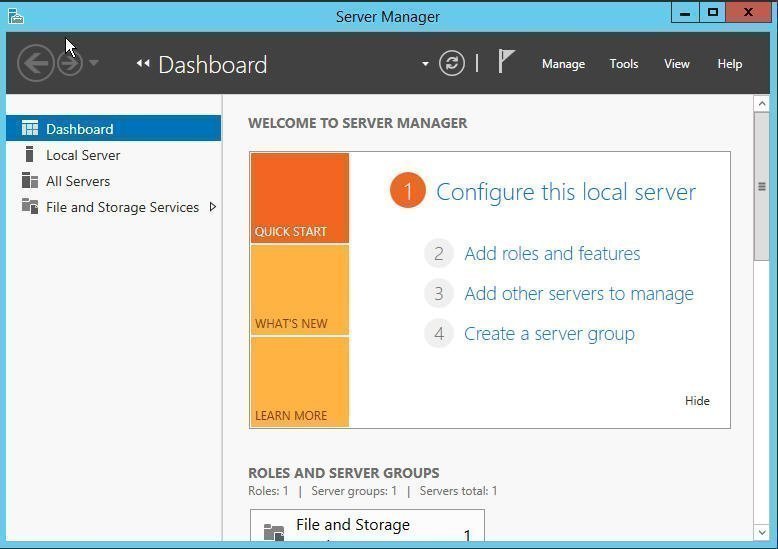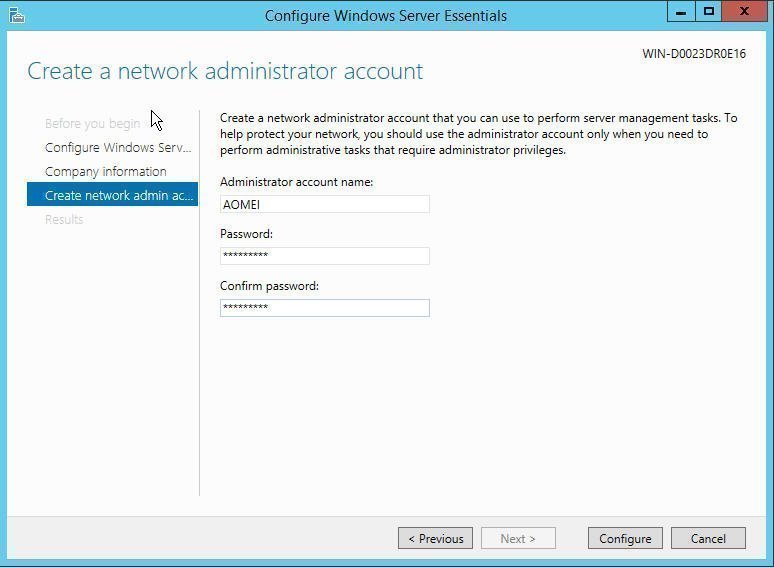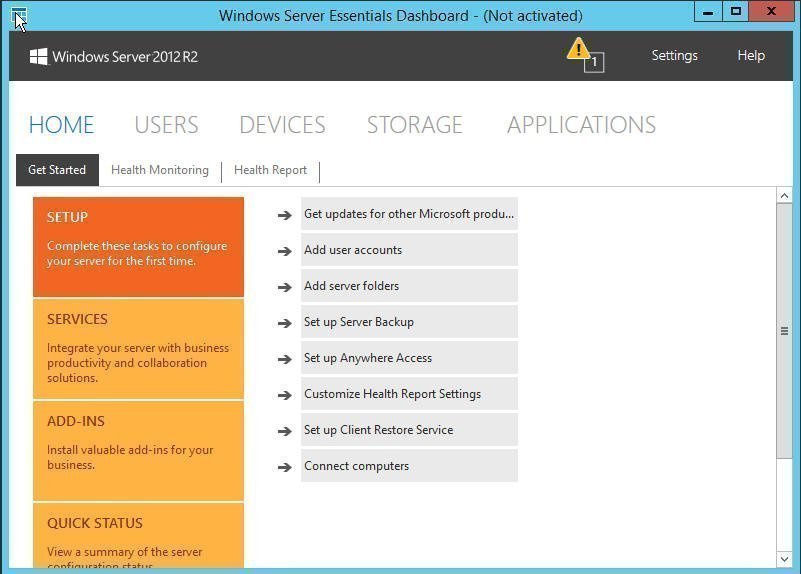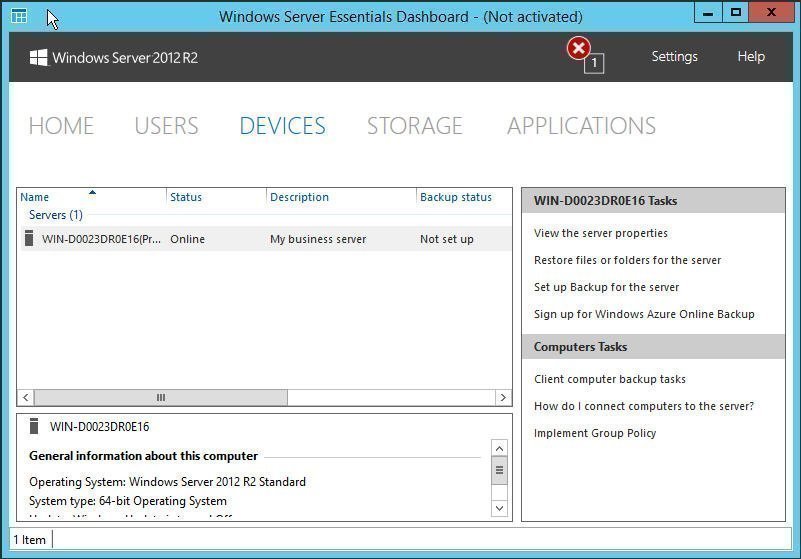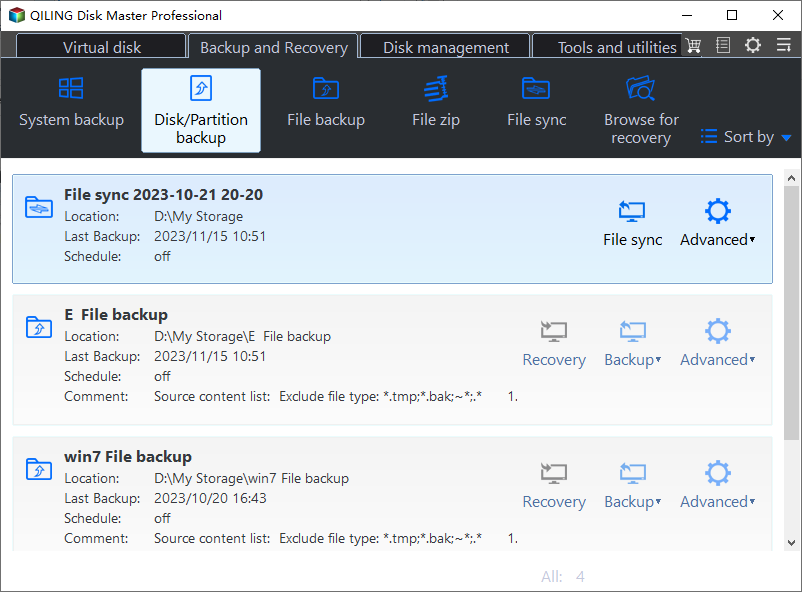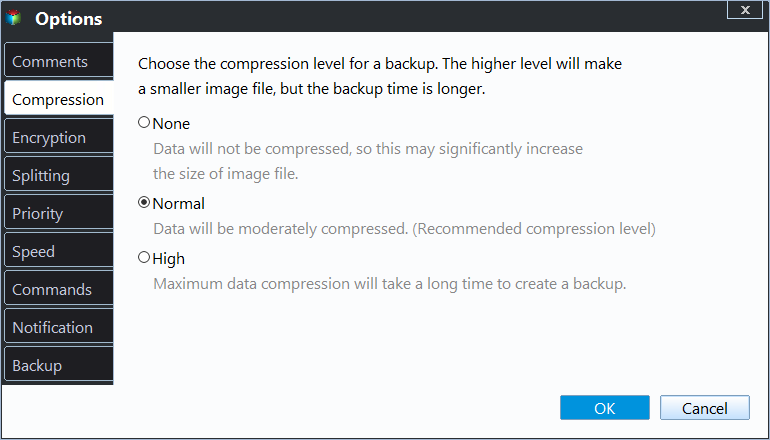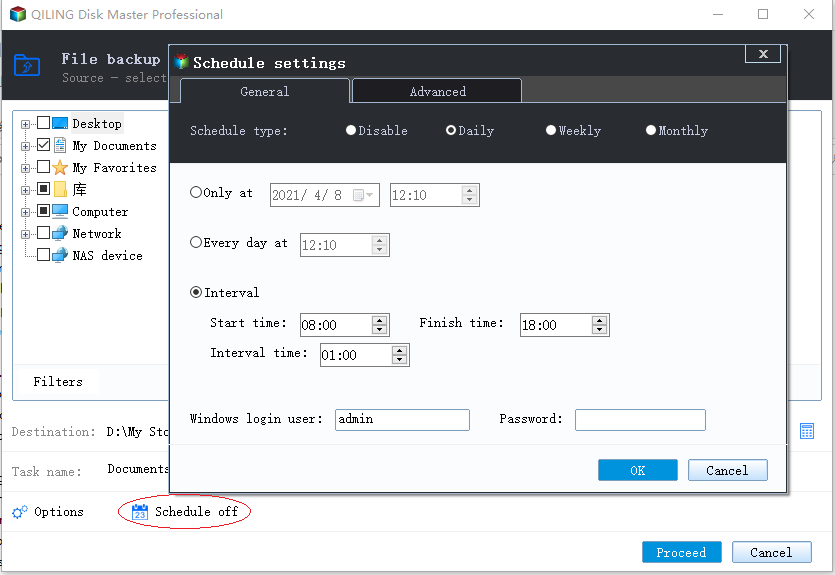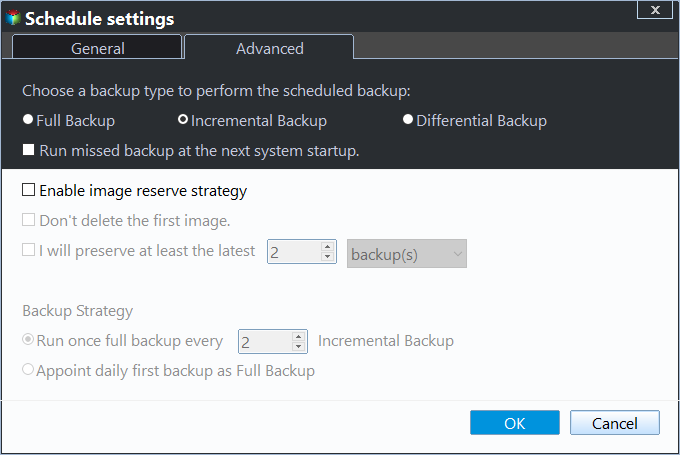Create and Manage Client Computer Backups on Windows Server
- Case: How to backup client computers to server?
- How to backup client computer in domain?
- Part 1. Install the Windows Server Essentials Dashboard
- Part 2. Configure Windows Server Essentials
- Part 3. Connect computers to Windows Server Essentials Domain
- Part 4. Detailed steps to backup client computers in domain
- Easier way to backup all client computers from a central server
- Conclusion
Case: How to backup client computers to server?
In a client-server architecture, the client computers rely on the server for various services, including backup services. The client computers interact with the server to complete the backup process, and the administrator can configure the backup settings centrally.
In Windows Server 2012, 2012 R2, 2016, and later versions, creating and managing client computer backups is a crucial task for system administrators. Here's a step-by-step guide on how to create and manage client computer backups in these operating systems.
How to backup client computer in domain?
To backup client computer in domain, you need to install Windows Server Essentials Dashboard first, then connect all client computers to Windows Server Essentials Domain. At last, Open Windows Server Essential Dashboard and backup the client computers. Here's an example to perform Windows Server 2012 client backup.
Part 1. Install the Windows Server Essentials Dashboard
To install and configure Windows Server Essentials on Windows Server 2012, follow these steps:
1. Launch Server Manager and click Add Roles and Features
2. Click Next to continue.
3. Select Installation Type -> server -> Server Roles: Windows Server Essentials Experience, then add features that are required for Windows Server Essentials Experience.
4. Follow the prompt until the last step and click Install.
Part 2. Configure Windows Server Essentials
1. To configure Windows Server Essentials on Windows Server 2012, follow these steps:
2. Click Next until you reach a window called Create a network administrator account. Type Administrator account name and password. At last, click Configure and wait for the final result.
Part 3. Connect computers to Windows Server Essentials Domain
When you connect a computer to a server, you need to ensure that your client computer has a valid connection to the Internet.
To connect all client computers to your server, follow the steps below.
1. Log on to the computer that you want to connect to the server.
2. Open an Internet browser, such as Internet Explorer.
3. Type https:///connect or https:///connect in the address bar and then press Enter.
4. Click Download software for Windows in the Connect your computer to the server page.
5. Run To join the client to the domain using the Connector application, follow these steps:
Part 4. Detailed steps to backup client computers in domain
1. Launch Windows Server Essentials Dashboard and click DEVICES.
2. Click Client computer backup tasks under Computers tasks tab
3. To set up a client computer backup schedule and retention policy, follow these steps:
Backing up client computers in a domain can be a complex process, especially if you're not familiar with Windows Server Essentials. However, with the right steps, you can set up a reliable backup system for your clients.
Easier way to backup all client computers from a central server
If you're not interested in going through the complex installation and setup process of a traditional backup system, you can use a simpler centralized backup software like Qiling Centralized Disk Master to perform client-server backup. This software offers a more straightforward and efficient way to back up client computers in a domain.
Just a few clicks, you can create a file backup/system backup/partition backup/disk backup task for all computers within LAN, and the supported OS includes Windows Server 2019/2016/2012 (R2)/2008 (R2)/2003 (R2), Microsoft Windows Home Server (WHS) 2011, Windows Small Business Server (SBS) 2011 and Windows 10/8.1/8/7/Vista/XP.
Qiling Centralized Disk Master offers a comprehensive backup solution that allows you to create, manage, and restore backups from a central machine. The software provides a range of advanced features to ensure that your backups are secure, efficient, and easy to manage.
Qiling Backup is a comprehensive backup solution that offers advanced features to ensure the security and integrity of your data. In recent versions, the software has been upgraded to include a SQL Server Backup feature, providing users with an additional tool to manage their database backups.
Here's a 30-day free trial for you:
Install and set up the software properly
1. Download Qiling Centralized Disk Master, install in on the central server as a management console.
2. It will detect all the available client computes on the network. You just need to select the ones you want to manage, and Install client program on them remotely or manually.
3. After that, you can Request Control for computers you want to backup, and start to create centralized backup task after getting their confirmation.
Now, you can use this centralized backup solution to create client backup for Windows Server 2012, 2016, 2019, etc.
How to create and manage client computer backups
1. After getting control over the client computers, you can switch to Tasks tab, click New Task and choose the task type as you need. Here choose Disk Backup as an example.
2. The backup setup screen is divided into three steps. In Step 1, you can click + Add Computers to detect all the controlled computers, and select the ones you want to backup.
3. In Step 2, you can either Select data based on a client (manual selection), or Select data based on backup rules (auto selection).
4. Click on Step 4, and click Add Storage to enter the network path of a share or NAS, then specify a folder in it as the target directory.
5. After the basic setup, you can manage Settings, or create a Schedule, Scheme to customize the backup, then click Proceed to create and execute the task.
Setting: Manage compression level, image spitting, backup mode (intelligent sector or exact backup), notifications, etc.
Schedule: Set up automatic backup Once/Daily/Weekly/Monthly, and choose to perform Full Backup/Incremental Backup/Differential Backup.
Scheme: To optimize storage space and maintain a tidy backup system, it's essential to implement an auto-delete rule for backups. This rule will automatically delete backups that are older than a specified number of days, ensuring that only the most recent and relevant backups are retained.
6. The backup tasks created will be listed under the Tasks tab, providing a centralized location for managing and monitoring these tasks. From this tab, you can directly manage the backup tasks, including:
Conclusion
Managing client computer backups can be a complex process, but with the right tools and approach, it can be streamlined. Windows Server Essentials Dashboard is a powerful tool for creating and managing client computer backups, but it may not be the most user-friendly option for everyone.
Managing backups for multiple client computers can be a time-consuming and labor-intensive process. However, with the right tools and approach, it can be streamlined. Qiling Centralized Disk Master is a powerful tool that allows you to create and manage backups for client computers without the need to join the domain.
Related Articles
- Comparison: Should You Backup to Cloud or Hard Drive
The file backup destinations common to most users are cloud drives and external hard drives. This article will compare the two backup methods based on universal access, security, and cost and recommend the best for you. We'll also discuss how you can use Qiling Backup Free to perform all-in-one backup functions. - Best Cloud Transfer App: MultCloud, cloudHQ, CloudFuze, Cloudsfer, Odrive
This cloud transfer article focuses on cloud-to-cloud migration. The article introduces the five best cloud transfer applications and the how-to steps. - Best HDD for Backup in 2022 [Most Comprehensive Guide]
This passage will recommend the best HDD for backup and list their pros and cons. So, you can choose one of them to protect your data. And you will also know how to back up your computer to HDD. - What's The Best Way to Backup A Nas? We Compared 3 Free Ways
Do you know how to backup a NAS and what is the best way to backup a NAS? Backing up NAS devices was once considered a challenge. But now, you have several options for proper NAS backup. This article will provide a guide to selecting the best way to create a NAS backup. - How to Backup Dropbox to External Drive [2 Tested Ways]
Do you know how to backup Dropbox to external drive? This article will describe two typical ways for you to back up Dropbox to an external drive. You can use one to create a backup of Dropbox to the external hard drive according to your needs. - How to Copy MS Office from Laptop to Pen Drive (Including Word, Excel, PPT)
Do you want to copy Microsoft Word onto a flash drive so you can run the Microsoft Word from the USB drive on another computer? You can easily make it happen with the help of Qiling easy transfer software. - (Easiest Way) How to Move MySQL Database to Another Server
In this article, you will get methods to move/migrate MySQL database to another server. The easiest way to migrate database from one server to another is Qiling Disk Master - a professional database moving software. And more, we also introduce the backup program of MySQL, getting the details to export/import MySQL database. - [2 Solutions] How to Transfer Autocad to New Computer
In this article, you will see how to transfer autocad to new computer. We will introduce 2 solutions to move autocad in Windows 10, 8, 7, which applies to transfer all settings, even autocad license transfer.
